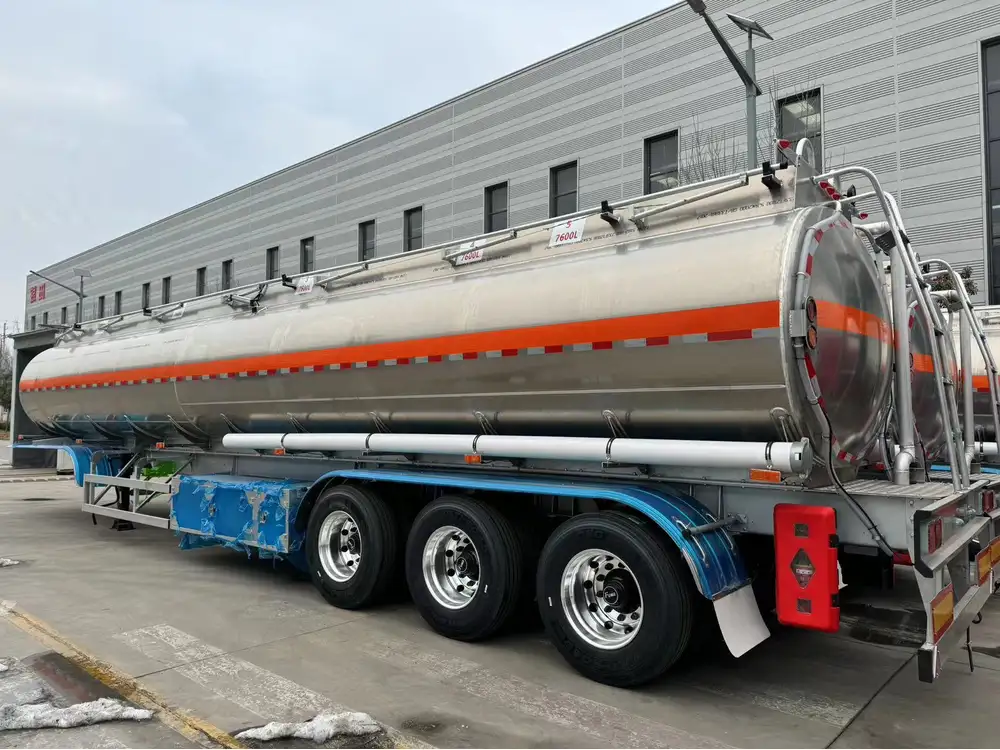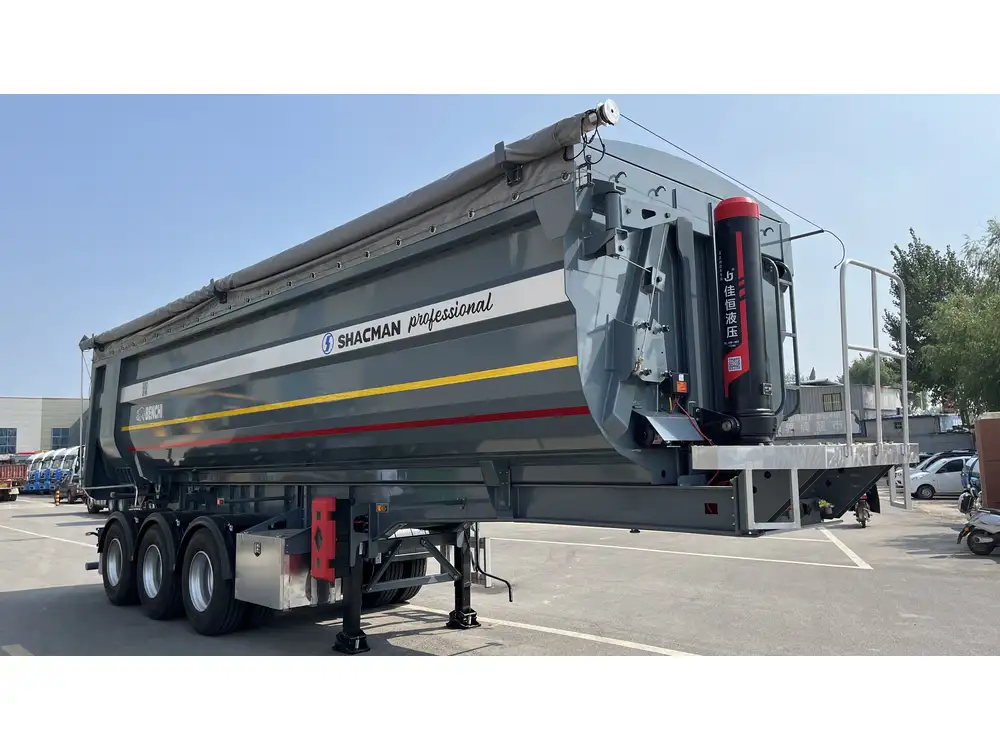Dump trailers are indispensable tools in various industries, serving a multitude of purposes from construction to landscaping. However, when you encounter hydraulic fluid leaks, it can pose significant challenges. Understanding the causes of these leaks and how to address them is crucial for maintaining your dump trailer’s functionality and longevity. In this article, we delve deep into the common reasons for hydraulic fluid leaks in dump trailers, providing detailed solutions and preventative measures to ensure your equipment operates optimally.
Common Causes of Hydraulic Fluid Leaks in Dump Trailers
1. Worn Seals and Gaskets
One of the primary culprits behind hydraulic fluid leaks is the degradation of seals and gaskets. Over time, these components can wear out due to:
| Factor | Description |
|---|---|
| Age | Older trailers exhibit more wear and tear. |
| Temperature | Extreme heat or cold can cause materials to expand or contract, leading to cracks. |
| Contaminants | Dirt and debris can compromise the integrity of seals. |
In most cases, when seals start to wear, they can no longer create an effective barrier, which leads to fluid seepage. Routine inspections and replacing worn gaskets can prevent further complications.

2. Damaged Hydraulic Hoses
Hydraulic hoses are essential for the movement of fluid throughout the dump trailer’s system. Damaged hoses can occur due to:
- Physical Abrasion: Scraping against sharp edges or constant movement can wear down hoses.
- Weathering: UV exposure and moisture can deteriorate rubber hoses.
- High Pressure: Excessive pressure beyond the hose’s rating can cause ruptures or leaks.
Inspection Checklist for Hydraulic Hoses
- Inspect hoses for visible cuts or abrasions.
- Check for kinks or bends that could restrict fluid flow.
- Look for signs of swelling or hardness, which may indicate compromised integrity.
3. Loose Fittings and Connections
Hydraulic systems rely on tight connections to function correctly. Loose fittings can lead to leaks through:
- Vibration: Frequent movement can cause fittings to loosen over time.
- Corrosion: Rust or debris may interfere with the seal of connections.

How to Maintain Fittings
To ensure your fittings remain secure, perform the following:
- Regularly tighten fittings using the manufacturer’s specifications.
- Implement anti-seize lubricant on threads to prevent corrosion and make future adjustments easier.
4. Faulty Hydraulic Cylinder
The hydraulic cylinder is the heart of a dump trailer’s hydraulic system. Damage or wear in the cylinder can manifest as leaks, often evident in:
- Worn Piston Seals: Direct exposure to abrasive materials can lead to seal degradation.
- Corrosion: Rust buildup can damage the cylinder, leading to leaks.
Signs of a Failing Hydraulic Cylinder
- Fluid accumulation: Puddles forming below the cylinder.
- Reduced lift capability: Difficulty in lifting loads that were previously manageable.
If the hydraulic cylinder shows signs of failure, it may require repair or replacement.

How to Diagnose Hydraulic Fluid Leaks
Step-by-Step Diagnostic Process
Visual Inspection: Start with a thorough examination of the trailer, focusing on the hydraulic components.
Identify the Source:
- Hoses: Inspect hoses for nicks or wear.
- Fittings: Check if any fittings feel loose or appear corroded.
- Cylinder: Look for fluid on the cylinder’s exterior.
Perform a Pressure Test:
- Use a hydraulic pressure gauge to identify pressure drops, which may indicate leaks within the system.
Clean and Track:
- Clean the hydraulic system and monitor for new fluid accumulation. Sometimes, identifying the source of the leak requires observation post-cleaning.
Solutions to Hydraulic Fluid Leaks

Seals and Gaskets Replacement
To replace worn seals and gaskets:
- Purchase a Replacement Kit: Ensure you have all necessary parts.
- Disassemble the Component: Carefully remove the old seals.
- Install New Seals: Follow manufacturer specifications to ensure correct placement.
- Test for Leaks: After reassembly, run the system to ensure no leaks are present.
Replacing Damaged Hoses
When addressing damaged hydraulic hoses:
- Cut Out the Damaged Section: Use a hose saw or cutter to remove the compromised area.
- Install New Hose: Attach the new segment, ensuring that the hose clamps are secure.
- Pressure Test: Check for any leaks using pressurized tests.
Tightening Loose Fittings
For loose fittings, simply:
- Utilize the Correct Tools: Use wrenches that fit snugly to avoid damaging the fittings.
- Tighten: Follow the manual’s torque specifications to ensure you don’t overtighten.

Repair or Replace the Hydraulic Cylinder
Depending on the damage:
- Repair: If the damage is minor and parts are available, replace seals or worn components within the cylinder.
- Replace: For extensive damage or corrosion, consider a complete replacement to guarantee system integrity.
Preventative Measures to Avoid Hydraulic Fluid Leaks
Routine Maintenance
Establish a routine maintenance schedule to:
- Inspect seals, gaskets, hoses, and fittings regularly.
- Replace worn parts proactively before they fail.

Use Quality Hydraulic Fluid
Using the right quality hydraulic fluid can greatly reduce wear on seals and hoses. Check the manufacturer’s recommendations for fluid types.
Environmental Considerations
- Store the trailer in a sheltered area to protect it from the elements.
- Regularly clean the area around hydraulic components to minimize debris buildup.
Training and Awareness
Train users on proper usage protocols for the dump trailer. Misuse can lead to mechanical stress and premature wear.

Conclusion
Hydraulic fluid leaks in dump trailers can be symptomatic of broader mechanical issues, signaling the need for timely intervention. By understanding the causes, implementing regular maintenance, and addressing leaks promptly, users can ensure their dump trailers operate efficiently. Knowledge of how to diagnose and rectify hydraulic issues fortifies the longevity and reliability of these indispensable machines in your fleet.
Every dump trailer owner should be equipped with the insights shared in this article. They can mitigate the risk of hydraulic fluid leaks, thereby enhancing productivity and significantly reducing operational costs. For any further technical assistance or inquiries regarding maintenance best practices, feel free to contact our technical support team, who are always ready to assist.



